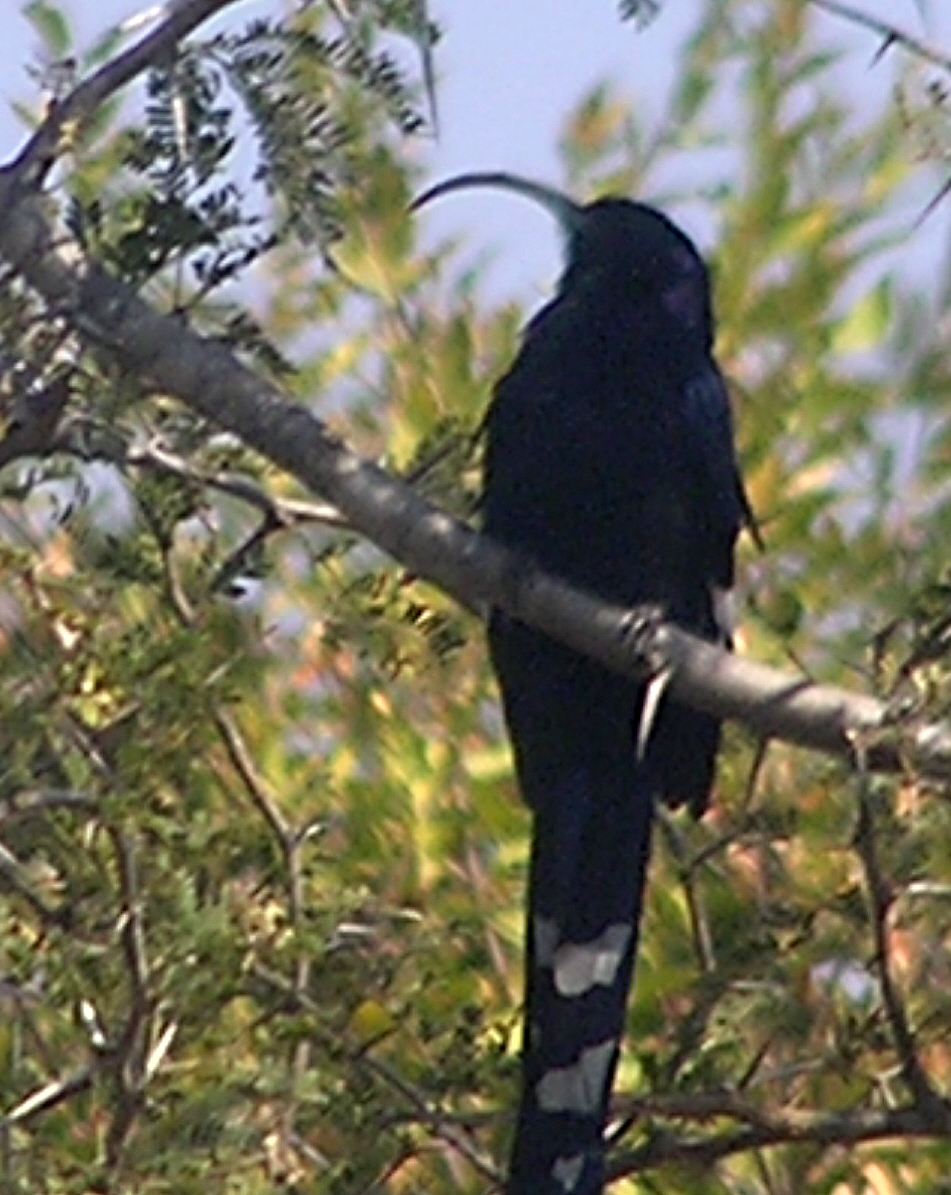- Scimitarbill
Taxobox
name = Scimitarbills

image_size = 240px
image_caption =Common Scimitarbill
("Rhinopomastus cyanomelas")
regnum =Animal ia
phylum = Chordata
classis = Aves
ordo =Coraciiformes
familia =Phoeniculidae
genus = "Rhinopomastus"
genus_authority = Jardine, 1828
subdivision_ranks = Species
subdivision =
*"Rhinopomastus aterrimus "
*"Rhinopomastus cyanomelas "
*"Rhinopomastus minor "Scimitarbills (also spelt Scimitar-bills) are three species of
Africa nbird belonging to thegenus "Rhinopomastus". They are often classified in thewoodhoopoe family Phoeniculidae; however, genetic studies show that they diverged from the true woodhoopoes about 10 million years ago and so they are sometimes placed in a family of their own, the Rhinopomastidae.They are smaller than most woodhoopoes and their bills are strongly curved like a
scimitar , giving them their name. They are mostly glossy black in colour with a few white markings on the wings. While other woodhoopoes are gregarious birds which gather in flocks, the scimitarbills are usually seen alone or in pairs.They feed mainly on
insect s and otherinvertebrate s, which they find by using their bills to probe into holes and crevices. They are acrobatic birds, well-adapted for clambering through trees. The eggs are laid in a tree cavity.pecies
*
Black Scimitarbill ("Rhinopomastus aterrimus") - less markedly curved bill than the others. Two populations, one extending fromWest Africa eastwards toEthiopia and the other inAngola and adjacent countries.
*Common Scimitarbill ("Rhinopomastus cyanomelas") - the largest and longest-tailed species and the only one with white markings on the tail. Inhabits Southern andEastern Africa .
*Abyssinian Scimitarbill ("Rhinopomastus minor") - smaller than the others with a red bill rather than a black one. Found in arid scrub fromTanzania north toSomalia .References
* Christopher Perrins, "ed." (2004) "The New Encyclopedia of Birds", Oxford University Press, Oxford
* Ian Sinclair & Peter Ryan (2003) "Birds of Africa south of the Sahara", Struik, Cape Town
Wikimedia Foundation. 2010.
